3,000-Year-Old History Of Tea: World’s Second Most-Consumed Drink After Clean Water
A. Sutherland - AncientPages.com - According to the opinion of the majority of experts on the subject, the homeland of tea is China.
![A painting of ancient Chinese playing a competitive game based on tea drinking in the Song Dynasty (960-1279). [Photo/people.cn]](https://www.ancientpages.com/wp-content/uploads/2019/04/teachinatradition1.jpg) A painting of ancient Chinese playing a competitive game based on tea drinking in the Song Dynasty (960-1279). Image credit: people.cn
A painting of ancient Chinese playing a competitive game based on tea drinking in the Song Dynasty (960-1279). Image credit: people.cn
Already three thousand years ago, and perhaps much earlier, the local population used tea leaves to prepare a medicament to alleviate stomach problems and increase concentration.
The habit of drinking tea for pleasure has been developing very slowly over many centuries.
According to legend, it all started in China around 2737 BC. One day, the Chinese emperor – Shennong (Shen Nung), an herbalist and scholar who usually drank only boiled water, rested under a wild tea tree.
Suddenly, a rush of wind caused several leaves to fall from the tree into his pitcher with water. Later, after taking the drink into his mouth, he felt an entirely new taste that surprised and charmed him.
Iranians usually drink tea with rock candy and in glass cups. Image credit: Persian Food Tours - CC BY-SA 4.0 DEED
The Chinese kept their secret for a long time. The first written mention of this plant dates back to the third century BC, and for many years, tea, made from the leaves of wild tea trees, was used only as a medicine and strengthening agent.
Hot tea promoters were Buddhist monks who discovered that tea helped them much during long hours of meditation. By the second century BC, Buddhist monks had found tea' to have stimulating properties and contributed to its cultivation and development.
During the Tang Dynasty (618-907), monks from Korea and Japan started to visit Buddhist monasteries in China more and more often. Returning to their homelands after many years of study, the monks took with them seeds of plants to undertake the first attempts to grow a tea bush in the secluded gardens.
They also introduced the custom of drinking tea to the religious ceremony. In the twelfth century, in Japan, there was a ritual in honor of the Buddha and the legendary founder of the Zen sect, Bodhidharma, known in Japan as Daruma.
Azerbaijani tea culture. Image credit: Investigation11111 - CC BY-SA 4.0 DEED
A few centuries later, tea became a popular and widely available drink. The art of preparing and drinking tea became a popular ritual, and teahouses began to appear.
In the mid-8th century, tea drinking became widely popular during the Tang Dynasty, and around 803 AD, monk Dengyo Daishi took the first seeds of a tea plant to Japan.
Soon, the reputation of this prestigious beverage drink spread to Korea, Japan, Vietnam, and Tibet. Through the centuries, various techniques for drying and processing tea and several different forms of tea were developed.
Europeans had already heard about tea from missionaries returning from the Far East. However, the Dutch were the first to bring it to Europe. The Dutch company East India Co. imported the prestigious tea beverage from China to Europe in 1609.
The ceremony of drinking tea as a new exotic drink spread in England, where it came to Thomas Garraway, a merchant and a shop owner in London). Initially, the privilege of consuming this exotic drink was only limited to very wealthy people - the royal family and aristocracy.
A few decades later, a marvelous tea beverage reached the rest of Europe, and elegant, beautifully decorated accessories and the opening of tearooms appeared across the continent.
At the same time, tea by land was brought to Russia as a gift from the Emperor of China for Tsar Nicholas Romanov.
Image credit: Samovary.ru
The Russian 'Samovar '("samovar" is "self-boiling") is the Russian tea machine, considered to be much better than other water-heating devices. In early times, the samovar was used not only for boiling water but also for boiling soup and 'sbiten' (hot honey & spice hot winter beverage. )
Soon, it appeared not only among the magnates; at the end of the 18th century, despite the still relatively high price, tea began to welcome guests at the tables of less affluent people.
Camel caravans packed with boxes filled with tea roamed the mountain regions, deserts, and steppes of Central Asia, southern Siberia, and Russia until the early twentieth century. Then, the situation changed for tea transport when the Trans-Siberian Railway was completed, and trade between China and Russia was revolutionized.
Written by – A. Sutherland - AncientPages.com Senior Staff Writer
Updated on Nov 18, 2023
Copyright © AncientPages.com All rights reserved. This material may not be published, broadcast, rewritten or redistributed in whole or part without the express written permission of AncientPages.com
More From Ancient Pages
-
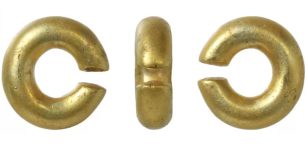 ‘Incredibly Mysterious’ Bronze Age Gold Penannular Ring Found In Norfolk
Archaeology | Apr 24, 2023
‘Incredibly Mysterious’ Bronze Age Gold Penannular Ring Found In Norfolk
Archaeology | Apr 24, 2023 -
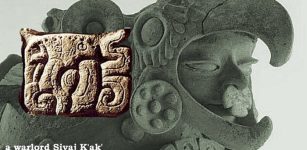 On This Day In History: Powerful Warlord And Emissary Of Spear-Thrower-Owl Arrived At Tikal – On Jan 8, 378 AD
News | Jan 8, 2017
On This Day In History: Powerful Warlord And Emissary Of Spear-Thrower-Owl Arrived At Tikal – On Jan 8, 378 AD
News | Jan 8, 2017 -
 On This Day In History: Mysterious Death Of White Queen Anne Neville – On Mar 16, 1485
News | Mar 16, 2017
On This Day In History: Mysterious Death Of White Queen Anne Neville – On Mar 16, 1485
News | Mar 16, 2017 -
 Ancient Symbol Fleur-de-lis: It’s Meaning And History Explained
Ancient Symbols | May 19, 2020
Ancient Symbol Fleur-de-lis: It’s Meaning And History Explained
Ancient Symbols | May 19, 2020 -
 Unraveling The Mystery Of The Celestial Matrix
Featured Stories | Sep 30, 2021
Unraveling The Mystery Of The Celestial Matrix
Featured Stories | Sep 30, 2021 -
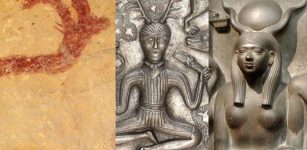 Mystery Of The Horned Serpent In North America, Mesopotamia, Egypt And Europe
Egyptian Mythology | Dec 7, 2017
Mystery Of The Horned Serpent In North America, Mesopotamia, Egypt And Europe
Egyptian Mythology | Dec 7, 2017 -
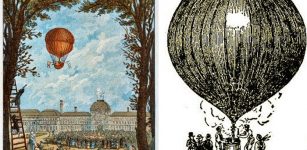 On This Day In History: First Experimental Hydrogen-Filled Balloon Reaches A 900m Altitude – On August 27, 1783
News | Aug 27, 2016
On This Day In History: First Experimental Hydrogen-Filled Balloon Reaches A 900m Altitude – On August 27, 1783
News | Aug 27, 2016 -
 2,000 Year-Old Books Written By Bian Que The Divine Healer Unearthed
Artifacts | May 13, 2014
2,000 Year-Old Books Written By Bian Que The Divine Healer Unearthed
Artifacts | May 13, 2014 -
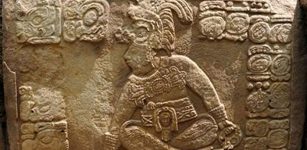 On This Day In History: Maya King Yuknoom Ixquiac ‘Jaguar Paw Smoke’ Assumes The Crown Of Calakmul – On Apr 3, 686
News | Apr 3, 2017
On This Day In History: Maya King Yuknoom Ixquiac ‘Jaguar Paw Smoke’ Assumes The Crown Of Calakmul – On Apr 3, 686
News | Apr 3, 2017 -
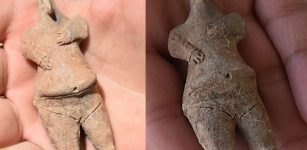 7,800-Year-Old Clay Female Figurine Unearthed In Ulucak Mound, Turkey’s Izmir
Archaeology | Aug 17, 2022
7,800-Year-Old Clay Female Figurine Unearthed In Ulucak Mound, Turkey’s Izmir
Archaeology | Aug 17, 2022 -
 How ‘Listening’ To Archaeological Sites Could Shed Light On The Past
Archaeology | Dec 8, 2023
How ‘Listening’ To Archaeological Sites Could Shed Light On The Past
Archaeology | Dec 8, 2023 -
 God Dagda – A Powerful Leader Of The Tuatha De Danann In Celtic Mythology
Celtic Mythology | May 30, 2020
God Dagda – A Powerful Leader Of The Tuatha De Danann In Celtic Mythology
Celtic Mythology | May 30, 2020 -
 Bog Body Of The Elling Woman: Was She Sacrificed To The Gods Because Of Climate Change?
Civilizations | Mar 25, 2017
Bog Body Of The Elling Woman: Was She Sacrificed To The Gods Because Of Climate Change?
Civilizations | Mar 25, 2017 -
 On This Day In History: Joan Of Arc Was Captured By The Burgundians – On May 23, 1430
News | May 23, 2016
On This Day In History: Joan Of Arc Was Captured By The Burgundians – On May 23, 1430
News | May 23, 2016 -
 Mystery Of The Ashkenazi Jews Found In A Medieval Mass Burial – Solved!
Archaeology | Aug 30, 2022
Mystery Of The Ashkenazi Jews Found In A Medieval Mass Burial – Solved!
Archaeology | Aug 30, 2022 -
 Manx: Ancient Dead Gaelic Language That Refused To Die And Has Been Revived Again
Ancient History Facts | Oct 7, 2016
Manx: Ancient Dead Gaelic Language That Refused To Die And Has Been Revived Again
Ancient History Facts | Oct 7, 2016 -
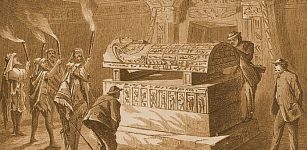 Before The Pharaohs: The Evidence For Advanced Civilization In Egypt’s Mysterious Prehistory
Civilizations | Apr 14, 2017
Before The Pharaohs: The Evidence For Advanced Civilization In Egypt’s Mysterious Prehistory
Civilizations | Apr 14, 2017 -
 On This Day In History: Cliff Palace At Mesa Verde, Colorado Discovered – On Dec 18, 1888
News | Dec 18, 2016
On This Day In History: Cliff Palace At Mesa Verde, Colorado Discovered – On Dec 18, 1888
News | Dec 18, 2016 -
 L’Anse Aux Meadows – Viking Site Confirms Norse Vinland Sagas Were Based On Real Events
Featured Stories | Jun 10, 2021
L’Anse Aux Meadows – Viking Site Confirms Norse Vinland Sagas Were Based On Real Events
Featured Stories | Jun 10, 2021 -
 Enigma Of San Bernardo Mummies That Refuse To Decompose
Featured Stories | Nov 7, 2018
Enigma Of San Bernardo Mummies That Refuse To Decompose
Featured Stories | Nov 7, 2018



